SOA Patterns > Basics > SOA Planning > SOA Funding Models > Service Funding
Service Funding
Agnostic services are created with the expectation that they will be reused and will provide repeated return on the investment originally required for their delivery. Because they are positioned as enterprise resources, they are not dedicated to any one project. Instead, they are to be used to automate different business processes for which different projects build different solutions. Therefore, the funding of these reusable services requires special attention.
There are several different funding models that can be utilized. The three common models are:
- Project Funding Model – Individual projects build new or extend existing reusable services.
- Central Funding Model – The funding of reusable services is provided centrally.
- Usage Funding Model – The initial delivery of reusable services is funded centrally but usage fees are subsequently charged.
- Hybrid Funding Model – A combination of project and central funding.
Let’s look at each model individually:
Project Funding Model (Service)
With this model, a project responsible for delivering a solution for the automation of a specific business process is required to identify and build reusable services (Figure 1). Although it may seem a simple and familiar approach for organizations accustomed to silo-based application delivery, this model places the burden of creating (and possibly maintaining) services that may be used throughout the enterprise upon a single project. The project may be given additional funding, but it can be difficult for project team members, for whom the priority is the automation of a particular business process, to ensure that agnostic services are designed as truly reusable and re-composable enterprise resources.
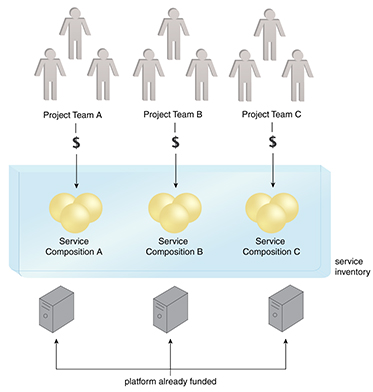
Figure 1 – The service inventory grows based on project demand under the Project Funding Model. (The same funding mechanism applies if services are deployed in a cloud.)
Pros
- more compatible with familiar silo-based delivery project models
- increased efficiency in the delivery of reusable services
Cons
- high risk of producing low-quality reusable services
- unclear support and ownership model
- can be difficult to measure the success of the project
Central Funding Model (Service)
Within the Central Funding Model the funding for building and maintaining shared and reusable services within the same service inventory comes from a sole pool of funds (Figure 2). As a result, individual project budgets are only impacted when:
- a new reusable service needs to be built (or an existing reusable service needs to be extended) and the project needs to wait for the central department to perform the development effort
- an existing reusable service needs to be used and there is cost and effort associated with incorporating it into the new solution
This model is common with organizations that have also chosen the Central Funding Model for platform funding purposes. In this case, the source of both forms of funding is likely the same.
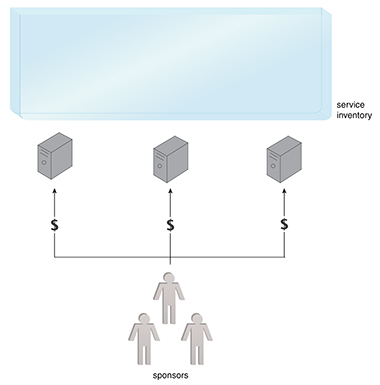
Figure 2 – Under the Central Funding Model, the service inventory grows based on project demand but is funded by a central group of sponsors. (The same funding mechanism applies if services are deployed in a cloud.)
Pros
- establishes a clear support and ownership model
- can help accelerate service reuse
- simplifies service governance
Cons
- can increase opportunity for wasteful spending or ?old-plating?of reusable services
- can introduce scalability challenges
Hybrid Funding Model (Service)
This model is based on a mixed funding framework where some funding comes from project budgets, while the rest is supplied by a central source. In other words, it’s a hybrid of the Project and Central Funding Models (Figure 3). The intent is to increase the ability to deliver truly reusable services based on project demand without over-taxing the individual project budgets.
A central fund needs to be established to cover the efforts falling outside of each project scope. Since shared services typically incorporate other projects as well as additional enterprise requirements in order to meet reusability goals, the actual cost ends up being higher than what projects have budgeted for their needs. Therefore, supplementary funding is distributed to allow projects to pay for functionality already included in their budgets, and to then cover the additional costs through a central fund.
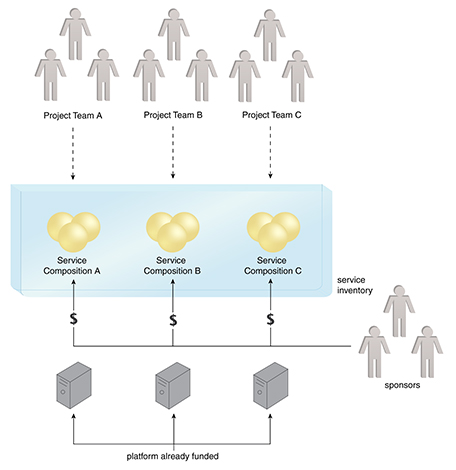
Figure 3 – Under the Supplemental Funding Model, the service inventory grows based on project demand while the project funding is supplemented from the central SOA fund. (The same funding mechanism applies if services are deployed in a cloud.)
The Hybrid Funding Model attempts to balance between project demands and enterprise goals. With this approach, projects no longer have to be concerned about additional funds required to make services truly reusable, injecting additional enterprise requirements not relevant to their immediate solution, or accepting work from other teams. The central funds take care of these requirements and who performs the actual work also becomes largely irrelevant.
Pros
- can balance project (tactical) and enterprise (strategic) goals
- can eliminate problems associated with the Project and Central Funding models
Cons
- can be hard to establish and maintain throughout the growth of a service inventory
- creates opportunities for abuse by projects
- may introduces complex service support and ownership requirements
Usage Based Funding Model (Service)
The Usage Based Funding Model for services is similar to the platform funding model of the same name, in that both are based on central funding that then requires usage fees to be charged to consumers (Figure 4). Usage-based services hosted in cloud platforms are comparable to the Software-as-a-Service (SaaS) cloud delivery model, especially when offered by third-party public cloud providers (Figure 5).
The pricing model is generally based on a system of charging nominal fees for each instance of a service used by a given service consumer. Furthermore, an entry fee may be charged for the first time a new solution requests access to the service. Over time, the initial investment of the service is recouped and then, hopefully, far succeeded with the collected funds.
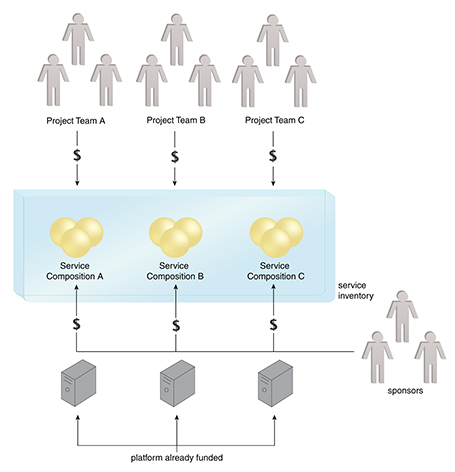
Figure 4 – Under the Usage Based Funding Model, the sponsors that centrally fund the service delivery charge project teams for the usage of the services.
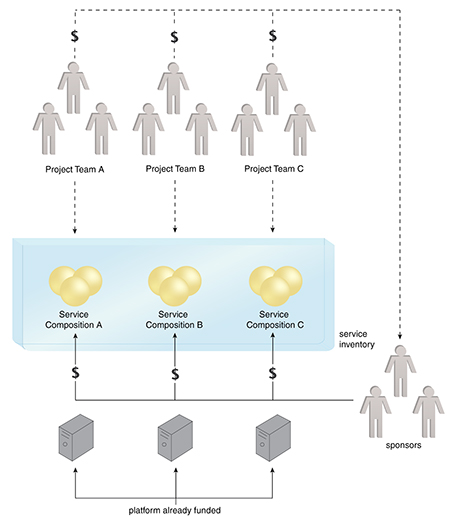
Figure 5 – When the Central Funding Model is applied to a cloud-based service inventory, the sponsors can still fund the servie delivery, but they can receive actual usage costs to bill the project teams via pay-for-use monitoring and reporting from the cloud provider.
Pros
- defines a clear system for investment recovery
- eliminates the need for additional forms of non-project funding
- stream of funds help empower service custodians to evolve and improve reusable services
Cons
- depends on the usage of billing mechanisms
- can be difficult to set appropriate fee structures that accommodate and are fair to all potential service consumers

